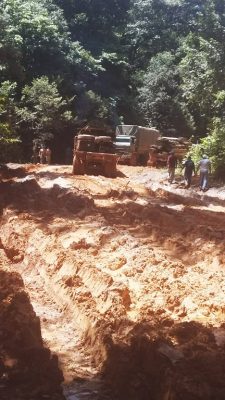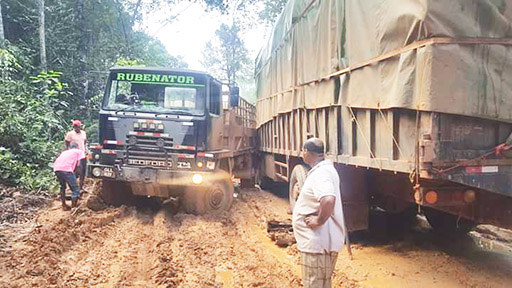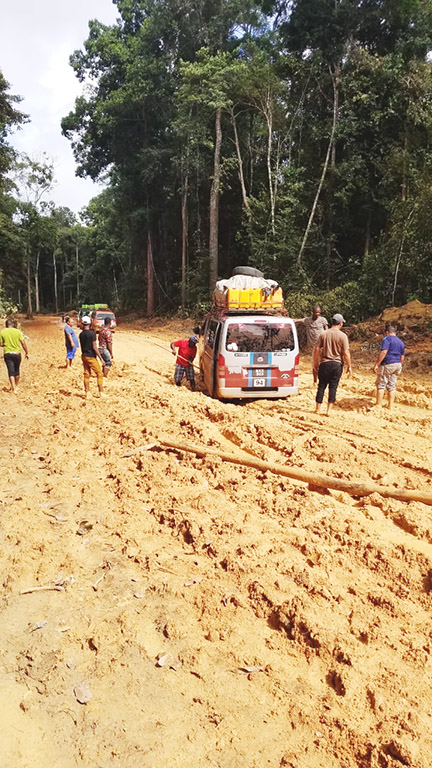Persistent rainfall has once again made sections of the Linden to Lethem trail a nightmare for motorists.
Vice-Chairman of Region Nine Karl Singh told this newspaper that while he has not used the trail recently, he has heard complaints from various persons, including bus operators, about its terrible state.
He said many of the issues appear to be occurring at a place called “38,” some distance from Annai, where there is a 200-metre stretch of slush that is giving the drivers of trucks, minibuses and smaller vehicles a hard time.
Not too far from that area, he said, there is another section that is in a similar condition and trucks are frequently becoming stuck there, posing a serious hazard to other users of the trail.

Shelesa Yarde, of Cindy’s Minibus Service, told Sunday Stabroek that due to the continuing rainfall, most of the trail has been transformed into thick mud and slush.
However, she noted that the situation has been compounded by the large, overloaded trucks that are still using the trail.
“We know the road is wet, so we can’t carry a certain amount of weight and for passengers we try to limit them to make life easier for us. The trucks can do the same but they don’t and they eventually end up being stuck on the trail, sometimes cross way, blocking anything from passing. They are sticking up because the weight is too much for the mud on the road,” Yarde explained.
She noted that fortunately her service has seasoned drivers who know how to manoeuvre the road properly, and coupled with their policy of limiting the weight carried by it vehicles, they do not often encounter issues affecting others using the road.
However, Yarde said the time it takes to travel from Linden to Lethem has increased substantially.

During the dry season when there are little issues on the trail, the journey would normally take between 12 and 15 hours. However, she noted that now the journey takes between 19 and 20 hours, and sometimes even extends as far as a full day.
“Drivers also mentioned that the profit they have been working for is way less now because when they go through the slush, it would block up their radiators and they would have to pay to get that cleaned multiple times. They are having issues with the mud getting into parts, such as the bearings and the belts and it contributes to the vehicles overheating steady. Their expenses have indeed gone up,” she added.






